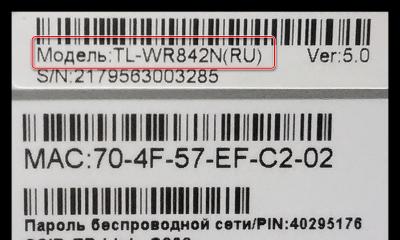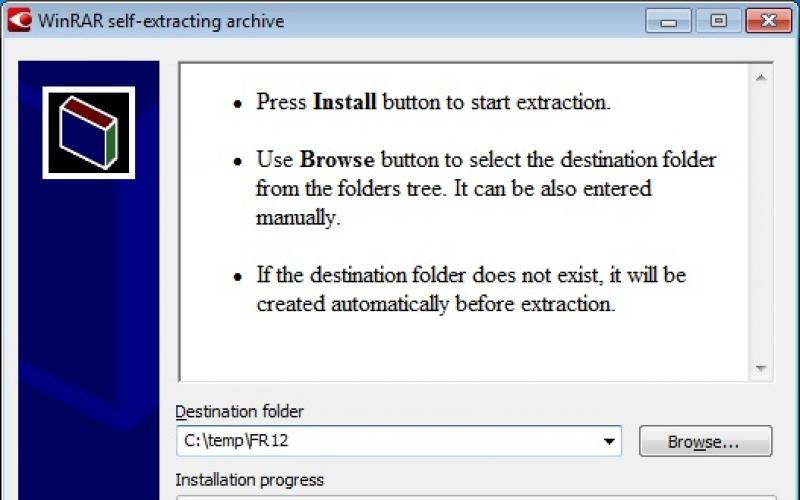Hello, Friends! In this article we will figure out how to adjust mouse sensitivity. Many people understand the word “sensitivity” as “Speed of pointer movement” and most likely want to know specifically about speed.
The pointer speed can be adjusted as follows. Open the menu. In the field we write “Mouse” and launch the corresponding found item
Go to the tab Pointer Options and in the section Moving set the desired speed

It is worth paying attention to the tick Enable increased pointer accuracy. This is mouse acceleration. If you move the mouse sharply or quickly, the cursor will move further. If you move the mouse slowly, the speed will slow down and you will be able to hit small elements more accurately.
Setting mouse sensitivity
It seems to me that 4 parameters are responsible for mouse sensitivity:
- DPI or CPI resolution
- Maximum acceleration
- Maximum speed
- USB port polling frequency

Permission(DPI or CPI) is the number of dots or reports per inch that your mouse's sensor can detect. I have a Logitech M325 with a fixed resolution of 1000 CPI. That is. When the mouse moves one inch (2.54 centimeters) across the table, the sensor will record (feel) 1000 changes or dots. Hence, the higher the CPI, the more sensitive the sensor is installed in the mouse and the more sensitive the latter.
The length of cursor movement across the screen is affected by two parameters:
- Permission
That is, if you have the speed slider set to the middle position (as in the figure above), then this is a 1 to 1 transfer. A mouse with a resolution of 1000 CPI will pass 1000 pixels on the screen in 1 inch. If you move the speed slider to the left or right, the mouse cursor will move across the screen less or more than 1000 pixels, respectively. That is, the speed of the pointer movement is the coefficient by which the “counts for the distance” traveled by the mouse are multiplied.
Sensitivity or resolution cannot be adjusted in all mice. In most “non-gaming” models it is fixed. In gaming models, a special button (or buttons) is allocated to change the resolution

which you can configure through software downloaded from the manufacturer’s website. In the same software You can set the base resolution or sensitivity (default). If we draw an analogy with a bicycle. Gears on the rear sprocket are the parameter Speed of pointer movement, and gears on the front sprocket (the one on the pedals) are changes in CPI using the buttons on the mouse itself. Hence it turns out that gaming mice are bicycles with two switches, and not gaming mice - with one (on the rear wheel) :-).

Maximum acceleration and speed. The higher the speed and greater acceleration the mouse sensor can adequately operate, the more sensitive the mouse itself.
USB port polling frequency. Usually specified in hertz. On at the moment has a maximum value of 1000 Hz, which is equal to the system polling frequency of the USB port. At a polling rate of 1000 Hz, the delay is 1 ms - this is the most advanced gaming mice. In simple mice, the polling frequency is, for the most part, 125 Hz and, accordingly, the delay is 8 ms. That is, the shorter the response time (for example, 2 or 1 ms), the more information about the mouse it will receive and the more sensitive the mouse. From here it becomes clear why Logitech gaming mice cannot work 6 pieces on one receiver like their “non-gaming” relatives. They take up all or almost all of the bandwidth of the USB port.
In the end. Mouse sensitivity can be changed or adjusted by two options:
- Permission
- Delay
Changing these settings is available either in gaming mice or in more advanced simple copies.
Everything said above is my opinion. I hope to see yours in the comments.
Hello, in this article I want to tell you how to increase or decrease the mouse cursor speed on the computer. There are times when this needs to be done and the reason for this may be:
- Windows crash;
- Buying a new mouse with a different sensitivity;
- Changing work computer, etc.
How to adjust cursor speed in Windows?
To do this, go to " Start" - "Control Panel"find and click on the item "Mouse".
Then go to the "tab" Pointer Options" and in paragraph " Moving"There should be a slider responsible for the speed of cursor movement. If the mouse speed is too high for you, then you need to reduce it moving the slider to the left. And if the mouse speed is too slow for you, then move the slider to the right accordingly.
After you click the apply button, you can try to see if it suits you set pointer speed or not. If the speed does not satisfy you, then continue adjusting the cursor speed and then press the button "OK".
Using the buttons on the mouse
On many modern mice, you can change the pointer speed without wasting time searching for settings. If office mice do not provide such a feature, gaming mice must be equipped with such buttons.

DPI can be said to be the main indicator of the smoothness and speed of the pointer. For example, my mouse has three buttons with different DPI modes, I use the middle one. Because it’s so comfortable for me, and in other modes it’s either very slow or very fast. The price of such mice is not too different from office mice, so they are quite affordable.
That's it! This method of adjusting the mouse pointer speed Suitable for any version of Windows 7, 8, 10.
I wish you good luck and success!
If you use a desktop computer or laptop with Windows 10, then of course you use a touchpad or mouse - a4tech bloody, Logitech, razer, defender, SteelSeries and so on.
If you experience some inconvenience while working, then on Windows 10 you can easily customize mouse button control to suit your needs.
To properly configure the mouse buttons, first of all you need to set the optimal cursor sensitivity, movement speed, sharpness and, of course, “tighten” the wheel, the capabilities of which not everyone uses to the fullest.
In this case, special attention should be paid to inversion, right, left and, if there are side buttons, in particular to the response.
For maximum convenience, the mouse click itself can be configured as a single or double click (click).
NOTE: For the most convenient experience, it is best to use a wireless bluetooth/radio mouse with five (side) buttons.
Basic mouse button settings in Windows 10 on a computer or laptop
IMPORTANT: These settings are available for most devices, but the most advanced dedicated mice or touchpad may have many additional settings that appear in a separate properties window.
To configure these settings, read the instruction manual for your device.
To configure basic mouse or touchpad settings, you must go to the application settings.
To do this, open the “Start menu” by clicking on the button in the lower left corner of the screen. Then click the "Options" button.
Now go to the "Devices" section


In this window, the first item indicates the button that will be the main one - by default it’s “left” and almost everyone uses it except for left-handed people.
The second item defines the mouse wheel. Tap to choose between scrolling multiple lines at a time or scrolling across one screen.
The easiest way to check these parameters is to open any site (or use the one you are currently on) and see what works best.
If you select the wheel to scroll multiple lines, the slider below will become active and you can set the number of lines to scroll.
Just click on it and drag left or right to decrease or increase the scroll size.
In the third point, you can enable scrolling of inactive windows when you hover the cursor over them.
The last option only applies to the touchpad. Click the drop-down menu to select the touchpad delay time.
The longer the delay, the longer you have to press the touchpad when you're done writing on the keyboard.
You can choose long, medium, short, or turn everything off completely. Default value: medium delay.
Advanced mouse button sensitivity settings in Windows 10
If you want to see other mouse settings, click on the line: " Additional options mice". After this, “Mouse Properties” will open.

If you check the box next to the line: “change button assignments,” the main one will change from left to right or vice versa.
The image on the right shows which mouse button is currently the primary one (in blue).
The last item on this tab is to enable and configure sticking. You can activate it by checking the box next to the line: “Enable sticky”, after which the settings options will become available.
To access mouse cursor settings, click on the "Pointers" tab at the top of the properties window.
How to adjust mouse button sensitivity on Windows 10
To access other cursor settings options, such as cursor sensitivity, click the “Pointer Options” tab at the top of the properties window.

In it, you can adjust the sensitivity and speed of cursor movement on the screen using the speed selection slider: move it left or right to decrease or increase the speed of the pointer movement.
There are several more settings on this same tab, but they are not so important that they need to be specifically described.
On the “Wheel” tab, you can specify how many lines the page of a website, book, or document should scroll.
The remaining options are intended for use by advanced users.
In the operating room Windows system 10, as in previous versions Windows, you can customize every little detail of your mouse.
As you can see windows settings 10 is simplified and accessible, where you can configure basic settings and access the detailed mouse properties settings window, with more options and the interface users are familiar with from earlier Windows versions. Good luck.
Sometimes it can be difficult to see the mouse cursor, especially when working on a small screen or if you have vision problems. If you can't find the cursor when you move the mouse, it's time to change its appearance and behavior. The most in a simple way there will be a change in settings that can be found in the Control Panel.
So, if you are the owner Windows 7, click on the Start button, in the search bar located at the bottom of the menu that appears, type “mouse” and follow the menu by clicking on the top line.
IN Windows 8, in the search bar, type “mouse” and in the options that appear, click on the line “Mouse” with a mouse icon (don’t let the “Accessibility: Mouse” option distract you, it does not contain all the necessary options).
Windows 10 In the Search field, enter “mouse.” Click on the “Change mouse settings” option. Then in the field that appears, click on “Advanced settings”.
Now, regardless of the system version, you should be in the “Properties: Mouse” menu.
Open the top row "Pointers", expand the "Scheme" menu and select something. You will find a wide variety of sizes, colors and contours. When you select one of the options, your cursor will not change appearance, however, your selection will appear in a square located to the right of the "Scheme" menu. If you want to see how the cursor will look during operation, click on the bottom “Apply” button, now you can test the mouse.
You can find more options by accessing the "Index Options" line. There, in the “Visibility” section, you can activate the display of the pointer trail, which will make the cursor more visible.
Requirements.
The article is applicable for Windows 2000/XP/Vista.
Information
If the default mouse pointer movement speed does not suit you, you can easily adjust it. This problem may occur when you connect another mouse to the computer; the speed may become faster or slower than what you are used to.
Set the mouse pointer speed.
Windows 2000.
Execute";
control panel and click "OK";
3. In the "Control Panel" window, find and click on the " Mouse";
Moving";
5. In the section " Speed
6. Click " Apply";
Windows XP.
1. From the "Start" menu, select " Execute";
2. In the "Open" field, enter the command control panel and click "OK";
3. If in the "Control Panel" window it is written in capital letters " Select category", then click on " Printers and other equipment". In the window that opens, find and click on " Mouse";
4. In the "Properties: Mouse" window, go to the " Pointer Options";
5. In the section " Moving", move the slider in the desired direction: left (slower), right (faster);
6. Click " Apply";
7. After selecting the desired speed, close all windows;
Windows Vista.
1. From the "Start" menu, select " Execute";
2. In the "Open" field, enter the command control panel and click "OK";
3. In the "Control Panel" window, find and click on " Mouse" (if your panel is configured by categories, then look in " Equipment and sound");
4. In the "Properties: Mouse" window, go to the " Pointer Options";
5. In the section " Moving", move the slider in the desired direction: left (slower), right (faster);
6. Click " Apply";
7. After selecting the desired speed, close all windows;







